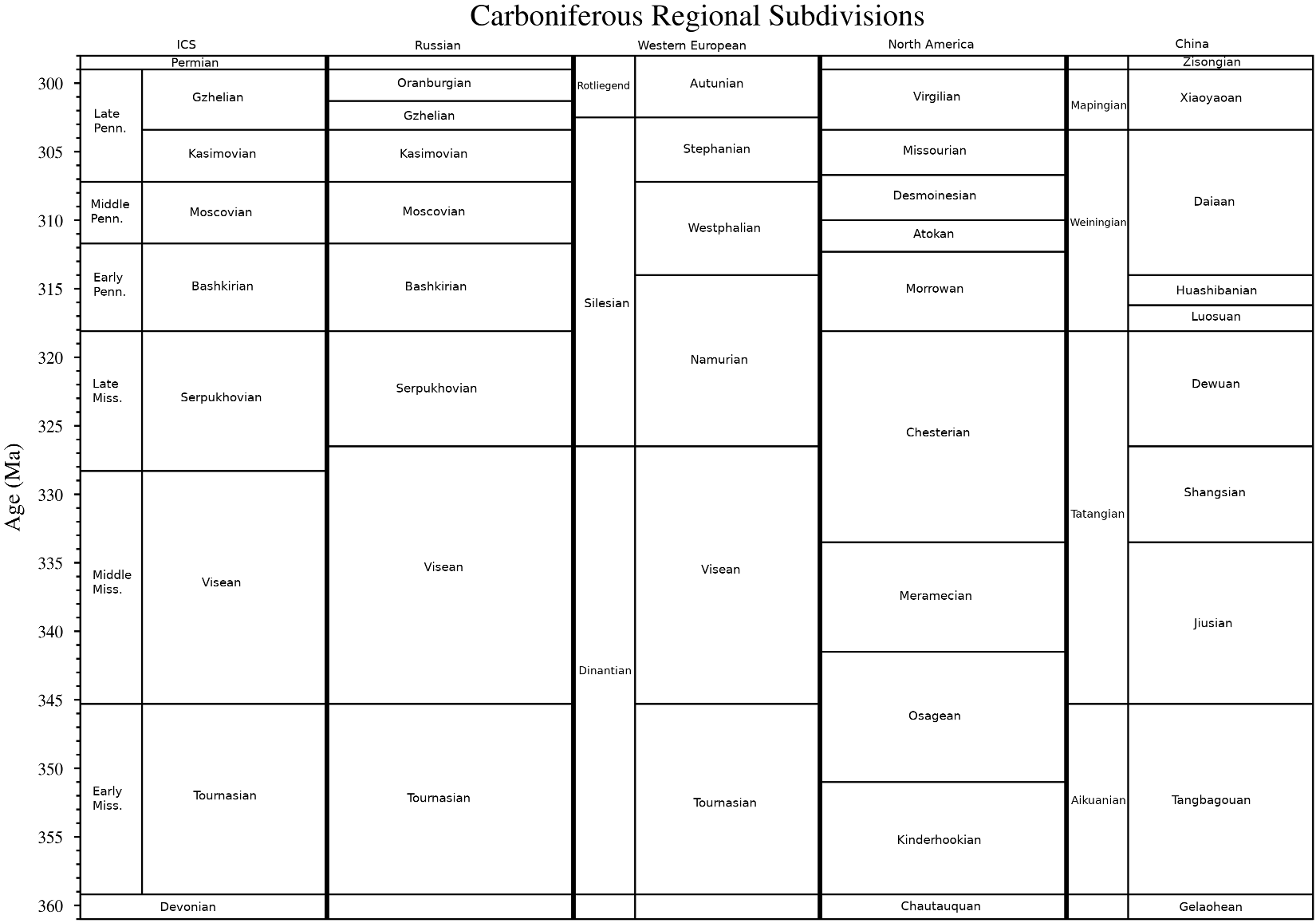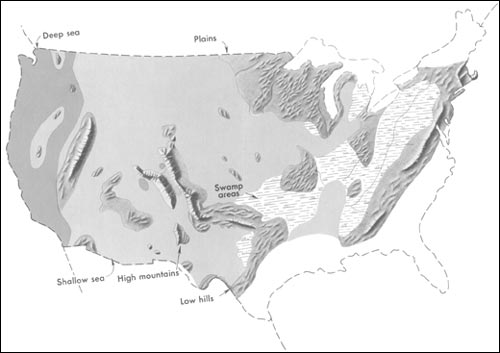|
Neuropteris
''Neuropteris'' is an extinct seed fern that existed in the Carboniferous period, known only from fossils. Major species include ''Neuropteris loschi''. See also *Coal forest Coal forests were the vast swathes of wetlands that covered much of the Earth's tropical land areas during the late Carboniferous (Pennsylvanian) and Permian times.Cleal, C. J. & Thomas, B. A. (2005). "Palaeozoic tropical rainforests and their e ... *'' Macroneuropteris'' References Pteridospermatophyta Pennsylvanian plants Prehistoric plant genera Carboniferous first appearances Carboniferous extinctions Fossils of Georgia (U.S. state) Paleozoic life of New Brunswick Paleozoic life of Nova Scotia Paleozoic life of Prince Edward Island Prehistoric plants of North America {{Carboniferous-plant-stub ... [...More Info...] [...Related Items...] OR: [Wikipedia] [Google] [Baidu] |
Macroneuropteris
''Macroneuropteris'' is a genus of Carboniferous seed plants in the order Medullosales. The genus is best known for the species ''Macroneuropteris scheuchzeri'', a medium-size tree that was common throughout the late Carboniferous Euramerica. Three similar species, ''M. macrophylla'', ''M. britannica'' and ''M. subauriculata'' are also included in the genus. Taxonomic history The most abundant species of this genus, ''Macroneuropteris scheuchzeri'', has had a long taxonomic history since it was first recognized in fossils found near Oxford, England by Edward Lhuyd in 1669. He referred to these leaves as ''Phyllites mineralis.'' It is illustrated and noted in Lhuyd's ''Lythophylacii Britannici Ichnographia'', an early manuscript on English fossils published in 1699 with the financial help of Isaac Newton. The species was further described in the ''Herbarium Diluvianum'' written in 1723 by the botanist Johann Jakob Scheuchzer. Nearly hundred years after Scheuchzer's death, the ... [...More Info...] [...Related Items...] OR: [Wikipedia] [Google] [Baidu] |
Pteridospermatophyta
The term Pteridospermatophyta (or "seed ferns" or "Pteridospermatopsida") is a polyphyletic group of extinct seed-bearing plants (spermatophytes). The earliest fossil evidence for plants of this type is the genus ''Elkinsia'' of the late Devonian age. They flourished particularly during the Carboniferous and Permian periods. Pteridosperms declined during the Mesozoic Era and had mostly disappeared by the end of the Cretaceous Period, though some pteridosperm-like plants seem to have survived into Eocene times, based on fossil finds in Tasmania. With regard to the enduring utility of this division, many palaeobotanists still use the pteridosperm grouping in an informal sense to refer to the seed plants that are not angiosperms, coniferoids (conifers or cordaites), ginkgophytes or cycadophytes (cycads or bennettites). This is particularly useful for extinct seed plant groups whose systematic relationships remain speculative, as they can be classified as pteridosperms with no v ... [...More Info...] [...Related Items...] OR: [Wikipedia] [Google] [Baidu] |
Carboniferous
The Carboniferous ( ) is a geologic period and system of the Paleozoic that spans 60 million years from the end of the Devonian Period million years ago (Mya), to the beginning of the Permian Period, million years ago. The name ''Carboniferous'' means "coal-bearing", from the Latin '' carbō'' (" coal") and '' ferō'' ("bear, carry"), and refers to the many coal beds formed globally during that time. The first of the modern 'system' names, it was coined by geologists William Conybeare and William Phillips in 1822, based on a study of the British rock succession. The Carboniferous is often treated in North America as two geological periods, the earlier Mississippian and the later Pennsylvanian. Terrestrial animal life was well established by the Carboniferous Period. Tetrapods (four limbed vertebrates), which had originated from lobe-finned fish during the preceding Devonian, became pentadactylous in and diversified during the Carboniferous, including early amphibian lin ... [...More Info...] [...Related Items...] OR: [Wikipedia] [Google] [Baidu] |
Coal Forest
Coal forests were the vast swathes of wetlands that covered much of the Earth's tropical land areas during the late Carboniferous (Pennsylvanian) and Permian times.Cleal, C. J. & Thomas, B. A. (2005). "Palaeozoic tropical rainforests and their effect on global climates: is the past the key to the present?" ''Geobiology'', ''3'', p. 13-31. As vegetable matter from these forests decayed, enormous deposits of peat accumulated, which later changed into coal. Much of the carbon in the peat deposits produced by coal forests came from photosynthetic splitting of existing carbon dioxide, which released the accompanying split-off oxygen into the atmosphere. This process may have greatly increased the oxygen level, possibly as high as about 35%, making the air more easily breathable by animals with inefficient respiratory systems, as indicated by the size of '' Meganeura'' compared to modern dragonflies. Coal forests covered tropical Euramerica (Europe, eastern North America, northwest ... [...More Info...] [...Related Items...] OR: [Wikipedia] [Google] [Baidu] |
Carboniferous First Appearances
The Carboniferous ( ) is a geologic period and system of the Paleozoic that spans 60 million years from the end of the Devonian Period million years ago (Mya), to the beginning of the Permian Period, million years ago. The name ''Carboniferous'' means "coal-bearing", from the Latin '' carbō'' ("coal") and '' ferō'' ("bear, carry"), and refers to the many coal beds formed globally during that time. The first of the modern 'system' names, it was coined by geologists William Conybeare and William Phillips in 1822, based on a study of the British rock succession. The Carboniferous is often treated in North America as two geological periods, the earlier Mississippian and the later Pennsylvanian. Terrestrial animal life was well established by the Carboniferous Period. Tetrapods (four limbed vertebrates), which had originated from lobe-finned fish during the preceding Devonian, became pentadactylous in and diversified during the Carboniferous, including early amphibian lineage ... [...More Info...] [...Related Items...] OR: [Wikipedia] [Google] [Baidu] |
Carboniferous Extinctions
The Carboniferous ( ) is a geologic period and system of the Paleozoic that spans 60 million years from the end of the Devonian Period million years ago ( Mya), to the beginning of the Permian Period, million years ago. The name ''Carboniferous'' means "coal-bearing", from the Latin '' carbō'' ("coal") and '' ferō'' ("bear, carry"), and refers to the many coal beds formed globally during that time. The first of the modern 'system' names, it was coined by geologists William Conybeare and William Phillips in 1822, based on a study of the British rock succession. The Carboniferous is often treated in North America as two geological periods, the earlier Mississippian and the later Pennsylvanian. Terrestrial animal life was well established by the Carboniferous Period. Tetrapods (four limbed vertebrates), which had originated from lobe-finned fish during the preceding Devonian, became pentadactylous in and diversified during the Carboniferous, including early amphibian lineage ... [...More Info...] [...Related Items...] OR: [Wikipedia] [Google] [Baidu] |
Late Carboniferous
Late may refer to: * LATE, an acronym which could stand for: ** Limbic-predominant age-related TDP-43 encephalopathy, a proposed form of dementia ** Local-authority trading enterprise, a New Zealand business law ** Local average treatment effect, a concept in econometrics Music * ''Late'' (album), a 2000 album by The 77s * Late!, a pseudonym used by Dave Grohl on his '' Pocketwatch'' album * Late (rapper), an underground rapper from Wolverhampton * "Late" (song), a song by Blue Angel * "Late", a song by Kanye West from '' Late Registration'' Other * Late (Tonga), an uninhabited volcanic island southwest of Vavau in the kingdom of Tonga * "Late" (''The Handmaid's Tale''), a television episode * LaTe, Oy Laivateollisuus Ab, a defunct shipbuilding company * Late may refer to a person who is Dead See also * * * '' Lates'', a genus of fish in the lates perch family * Later (other) * Tardiness * Tardiness (scheduling) {{disambig ... [...More Info...] [...Related Items...] OR: [Wikipedia] [Google] [Baidu] |
Nicaise Auguste Desvaux
Nicaise Auguste Desvaux (28 August 1784 – 12 July 1856) was a French botanist. From 1816 he taught classes in Angers, where from 1817 to 1838 he served as director of its botanical garden A botanical garden or botanic gardenThe terms ''botanic'' and ''botanical'' and ''garden'' or ''gardens'' are used more-or-less interchangeably, although the word ''botanic'' is generally reserved for the earlier, more traditional gardens, an .... He described the botanical genera '' Neslia'', '' Mycenastrum'', '' Rostkovia'' and '' Didymoglossum''. The genus '' Desvauxia'' is named in his honor. Works *''Journal de Botanique, appliquée à l'Agriculture, à la Pharmacie, à la Médecine et aux Arts'' (1813-1815, 4 volumes). *''Observations sur les plantes des environs d'Angers'' (1818). *''Flore de l'Anjou ou exposition méthodique des plantes du département de Maine et Loire et de l’ancien Anjou'' (1827). *''Prodrome de la famille des fougères'' (1827). *''Sur le genre Mycenastrum' ... [...More Info...] [...Related Items...] OR: [Wikipedia] [Google] [Baidu] |
Fossil
A fossil (from Classical Latin , ) is any preserved remains, impression, or trace of any once-living thing from a past geological age. Examples include bones, shells, exoskeletons, stone imprints of animals or microbes, objects preserved in amber, hair, petrified wood and DNA remnants. The totality of fossils is known as the ''fossil record''. Paleontology is the study of fossils: their age, method of formation, and evolutionary significance. Specimens are usually considered to be fossils if they are over 10,000 years old. The oldest fossils are around 3.48 billion years old to 4.1 billion years old. Early edition, published online before print. The observation in the 19th century that certain fossils were associated with certain rock strata led to the recognition of a geological timescale and the relative ages of different fossils. The development of radiometric dating techniques in the early 20th century allowed scientists to quantitatively measure the abs ... [...More Info...] [...Related Items...] OR: [Wikipedia] [Google] [Baidu] |
Species
In biology, a species is the basic unit of Taxonomy (biology), classification and a taxonomic rank of an organism, as well as a unit of biodiversity. A species is often defined as the largest group of organisms in which any two individuals of the appropriate sexes or mating types can reproduction, produce Fertility, fertile offspring, typically by sexual reproduction. Other ways of defining species include their karyotype, DNA sequence, morphology (biology), morphology, behaviour or ecological niche. In addition, paleontologists use the concept of the chronospecies since fossil reproduction cannot be examined. The most recent rigorous estimate for the total number of species of eukaryotes is between 8 and 8.7 million. However, only about 14% of these had been described by 2011. All species (except viruses) are given a binomial nomenclature, two-part name, a "binomial". The first part of a binomial is the genus to which the species belongs. The second part is called the specifi ... [...More Info...] [...Related Items...] OR: [Wikipedia] [Google] [Baidu] |
Pennsylvanian Plants
Pennsylvanian may refer to: * A person or thing from Pennsylvania Pennsylvania (; (Pennsylvania Dutch: )), officially the Commonwealth of Pennsylvania, is a state spanning the Mid-Atlantic, Northeastern, Appalachian, and Great Lakes regions of the United States. It borders Delaware to its southeast, Ma ... * Pennsylvanian (geology), a geological subperiod of the Carboniferous Period * ''Pennsylvanian'' (train), an Amtrak train {{disambiguation ... [...More Info...] [...Related Items...] OR: [Wikipedia] [Google] [Baidu] |
Prehistoric Plant Genera
Prehistory, also known as pre-literary history, is the period of human history between the use of the first stone tools by hominins 3.3 million years ago and the beginning of recorded history with the invention of writing systems. The use of symbols, marks, and images appears very early among humans, but the earliest known writing systems appeared 5000 years ago. It took thousands of years for writing systems to be widely adopted, with writing spreading to almost all cultures by the 19th century. The end of prehistory therefore came at very different times in different places, and the term is less often used in discussing societies where prehistory ended relatively recently. In the early Bronze Age, Sumer in Mesopotamia, the Indus Valley Civilisation, and ancient Egypt were the first civilizations to develop their own scripts and to keep historical records, with their neighbors following. Most other civilizations reached the end of prehistory during the following Iron Age. ... [...More Info...] [...Related Items...] OR: [Wikipedia] [Google] [Baidu] |

.jpg)






